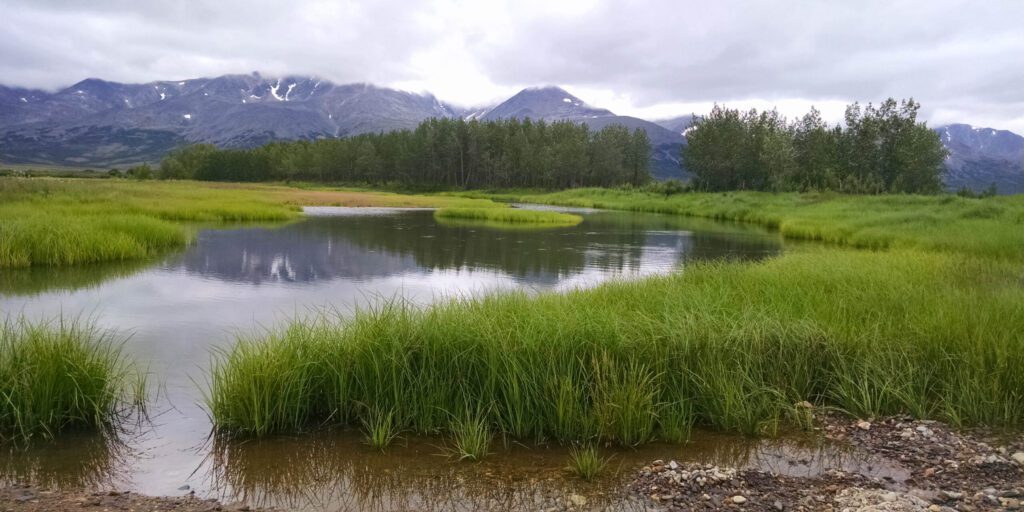Nome residents could soon be able to buy locally grown vegetables from Pilgrim Hot Springs at a market stand in town.
Thanks to the Pilgrim Produce program, which receives some funding from a USDA grant, various crops are currently being grown at Pilgrim Hot Springs on Unaaqtuq land. Unaaqtuq is a consortium of organizations and Native corporations, such as White Mountain and Mary’s Igloo, that has partnered with groups like the Bering Straits Development Company (BSDC).
Robert Bensin is the construction manager with BSDC. He says:
“The staple ones are definitely the potatoes and the onions, and we’ve definitely gone real big. If we get to what the average yield is per plant for the potatoes, we are probably looking at a few thousand pounds. As with the onions, there is definitely a few thousand onions already, in the ground, that are doing very well.”
Bensin is one of the few people who is regularly found at Pilgrim with his boots on the ground and hands in the dirt. He explains why it’s beneficial to have the option to buy locally grown produce.
“Well it’s organic, so: GMO-free, no pesticides, no fertilizers — well, no bad fertilizers — obviously, you know, (we use) compost — and it will be competitive with the local markets here in town.”
For the other plants growing out at Pilgrim, including celery, squash, pumpkins, and much more, Bensin says it’s hard to say what the yield will be at this point in the season.
Last summer, in 2016, the test garden that produced a crop harvest from a 1-acre plot of land received a dusting of snow during the first week of September, forcing the team to end their growing season.

Photo Credit: Margaret DeMaioribus, KNOM (2017)
This summer, Bensin says they started growing earlier than last time, but how much time they have to grow is uncertain:
“It’s really just, you know, keeping an eye on the weather and keeping an eye on the road conditions, as well, because that dictates when you get in and out of there for the end of the season.”
Overall, there have been many challenges to maintaining a growing farm next to the Hot Springs, such as voles snacking on the crops, beavers damming up culverts, which blocks water flow, and accessing the site on a regular basis.
Bensin suggests that transporting the plants to and from Pilgrim is most difficult:
“It’s the logistics, it’s starting the starts here in town and having to transport them out there. Still, we have to see what it’s going to take to get them back, once we harvest, what it’s going to take to get everything back here to market.”
Pilgrim Produce hopes to have a weekly farmer’s market stand within Nome city limits starting up on Saturdays sometime this summer. According to Bensin, more information about the vegetables for sale, the selling times, and the stand location will be forthcoming.







